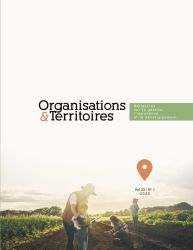Lien au territoire selon les générations chez les Anicinapek et les Cris
DOI:
https://doi.org/10.1522/revueot.v29n1.1132Keywords:
Native, rural areas, youth, young people, territory, indigenous communities, belonging to the territoryAbstract
The objective of this exploratory research is to address the triple occultation (rurality, indigeneity, and youth) experienced by young indigenous people in rural areas, by documenting how the three aspects of the link to the land (emotional, cognitive, and functional) are displayed by different generations in two indigenous communities in Quebec. There is a sense of belonging to the land (emotional aspect) at all ages, although the forest, community and city have different levels of importance. All generations spend time in the forest, but at different times and to practise different activities. The youth identify their community as home, whereas for the elderly it is the forest. The cognitive aspect is reflected in the perception of a threat associated to the degradation of the land, particularly among the elderly people. Some young people are weakly linked to the land, probably because this period of life is characterized by a quest for identity. All the generations practise traditional activities (functional aspect), but in different ways.



